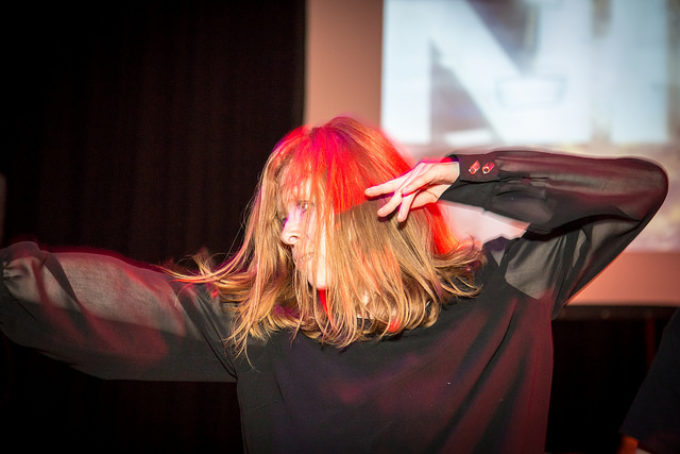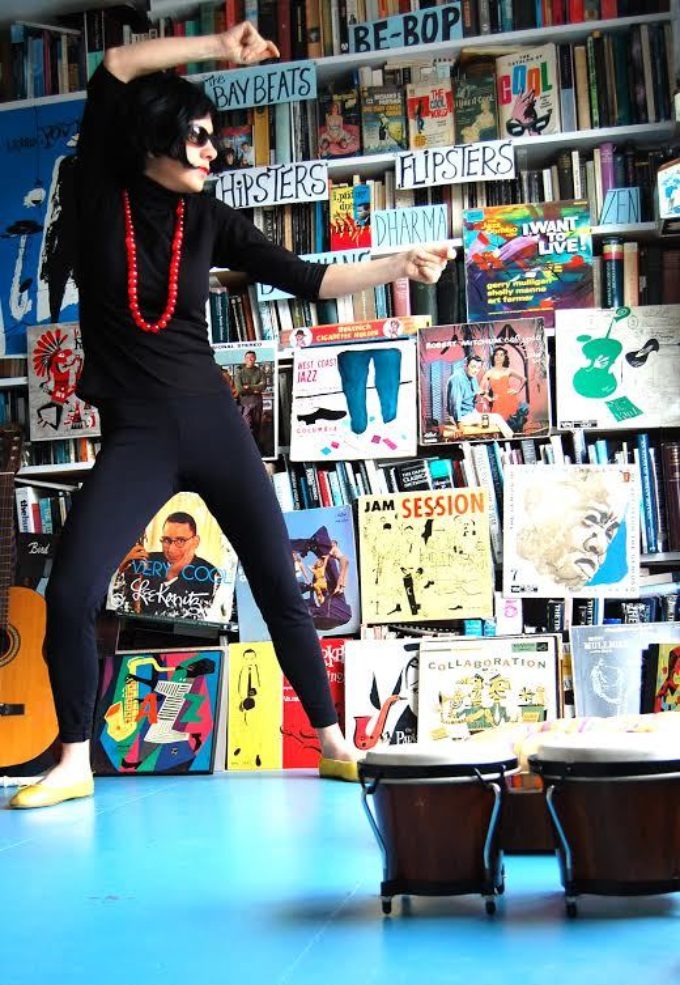

As a way to reminisce about the invigorating performance of Face In / Let’s Talk about Dis delivered by Candoco Dance Company at the Attenborough Centre for the Creative Arts for South East Dances’ Undisciplined festival last month, Sarah Watson and Lisa Wolfe write to us to give us a further insight on the experience of seeing the company come to our venue to perform, from its pre-show up to its post-show moments. Sarah Watson, Chair of Carousel, visual artist and reviewer went to see Candoco with Lisa Wolfe, marketing manager at Carousel, freelance producer and reviewer.
This is the conversation they had before, between and after the show:
Before: a pre-show conversation
It felt like the first day of summer. They sat on the grass outside the Attenborough Centre for the Creative Arts with dancers wearing Candoco track-suit tops; most were smoking. “I really like the visual story they sent out” said Sarah, starting the conversation. “Some people relate better to visuals than to words.” Lisa agreed but said she doesn’t like to know too much about what she is about to see before she sees it, but she did want to hear the pre-show talk chaired by Luke Pell. There they learned that Candoco will soon be 30. “I am bit late as this is the first time I’ve seen them. Better late than never!” said Sarah. They also heard that the two pieces they were about to see are from the company repertoire. Hetain Patel’s piece, ‘Let’s Talk About Dis’ was made in 2014 with a different set of dancers; now new dancers speak and perform their words. They wondered what difference that would make.
In Between: an interval conversation
They watched Yasmin Godder’s ‘Face In’ from seats where the captions were clearly visible, behind a row of wheelchair users. Lisa and Sarah both see a lot of performance by and for people with all kinds of disability and are always pleased to see differently abled people in the audience, in a highly accessible venue to boot.
Sarah put on and took off her noise-blocking headphones as the music moved from high drones through indie, retro and techno. The sound track punctuated the action on stage in which dancers, dressed in colourful sporty gear did “very contemporary dance moves” (in Sarah’s view) which pitched them in and out of relationships. Both found the choreography playful and liked how it boldly exploited the potential of each body. Lisa wrote in her notebook “…they seem on the edge of madness, in a state of shock - like West Street on a Saturday night.” They agreed on this and found all the dancers were impressive, but for Sarah whilst they were all watchable, no-one stood out for charisma. “It didn’t bust my giggles” she said. Lisa loved that phrase and will probably steal it. The lighting they both found less interesting. “It needed more visual glue, something to bring it all together” said Sarah. Lisa thought it was a bit like an action painting, with the bright colours, the splatter of dancers around the stage, the duos and solos dropped here and there. She liked how costumes were used to change body shape. “Ben Wright said it was psychedelic” said Sarah “but I didn’t get that. I thought it needed tidying up.” Lisa was happy with the randomness of Face In, but missed an emotional pull.
After: a post-show conversation
Well, this was a different bag of chips altogether. From the first few minutes of Hetain Patel’s Let’s Talk About Dis Sarah’s giggles had properly busted. “I know what that sign means” Sarah said gleefully “this is very rude.”
Sarah and Lisa found they agreed on just about everything. That the lighting design, by Jackie Shemesh,created mood; that the stage picture was very clear, with a performance area marked out and a row of chairs at the back. They found the themes of the piece easy to digest. “It made me feel happy” said Sarah, “I liked the games they were playing.” Lisa said she enjoyed the subtlety and subversion of gesture and text, how they dissected disability, inclusivity, diversity and all those other things that are still concerns four years after the piece was made. “It’s very carefully choreographed and calibrated, playing with translating and trust” she said, rather pompously. Sarah got more to the point saying “I got the message.”
Carousel offers learning-disabled artists a route into a full creative life through training, production and events. Brighton based for 34 years, it works in film, music, digital, visual arts and performance.
Sarah and Lisa often share the dance floor at Carousel’s Blue Camel Club and one day will make a dance piece together. Read Sarah’s review of Candoco at www.creativemindsproject.org.uk
Find out more about Carousel, including the Blue Camel Club for learning- disabled people who love to dance, at www.carousel.org.uk
Photo of Sarah Watson by Paul Mansfield
Photo of Lisa Wolfe by Peter Chrisp